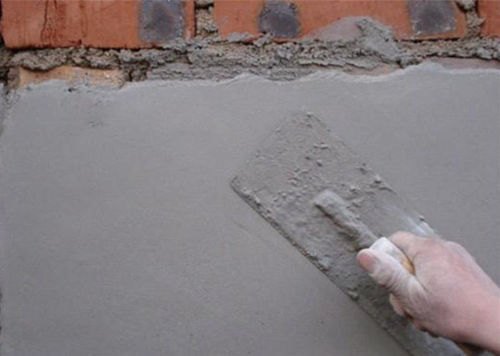Plastering work is a dainty layer of mortar, applied over the workmanship and it goes about as a sodden-proof coat over the block workmanship work. Cement Plaster additionally gives a completed surface over the workmanship that is firm and smooth consequently it upgrades the presence of the structure.

The essential goals of plastering are to shield the surface from climatic impacts, to cover the inadequate workmanship in brickwork, to disguise permeable materials, and to give a reasonable surface to paint.
Plaster is a slender layer of mortar applied over the workmanship surface and it goes about as a moist proof coat over the block brickwork. Plastering additionally gives a completed surface over the stonework that is firm and smooth consequently it improves the presence of the structure. The essential destinations of plastering are to shield the surface from air impacts, to cover the blemished workmanship in brickwork, to disguise permeable materials, and to give an appropriate surface to paint.
The errand of plastering your home may appear to be a superfluous advance, in an all-around extended course of preparing a home. Nonetheless, it’s should have been done because it assists with giving the ideal completion to your wall. Cement plastering your home conceals all cragged and lopsided surfaces of the walls. A smooth and clean surface anticipates later a series of cement plastering.
Cement plaster is utilized to plaster the inside just as the outside walls of the house. The best nature of cement plastering is required to work hard. Cement plaster is a combination of water, fine totals, and Portland cement. Cement and sand are blended in various sums to get the cement plaster.
For inside walls, a solitary layer of plaster is generally enough for a decent surface. Many coats are utilized, contingent upon the thickness of plaster and the idea of the surface.
The suggested thickness of individual layers of plaster continues in the table underneath
Lime Plaster: Comprises of a lime blend, with sand: lime proportion of 1:3. Utilized for undercoat and completed surfaces.
Cement Plaster: Cement and sand are utilized in the proportion of 1:3 and blended in with water.
Gypsum Plaster: New assortment of plaster with diminished possibilities of shrinkage and breaks.
Sorts of completions given by plasterers are as per the following –
- Smooth cast finish
- Harsh cast finish
- Sand confronted finish
- Pebbledash Finish
- Scratched Finish
The procedure of Plastering Work
1. Arrangement of Surface for Plastering
Keep all the mortar joints of the wall harsh, to give a decent clinging to hold plaster.
Roughen the whole wall to be plastered.
Clean every one of the joints and surfaces of the wall with a wire brush, there ought to be no oil or oil and so on left on the wall surface.
If there exist any pits or openings on a superficial level, fill them ahead of time with fitting material.
If the surface is smooth or the wall to be plastered is an old one, then, at that point, rake out the mortar joint to a profundity of somewhere around 12 mm to give a superior clinging to the plaster.
Wash the mortar joints and whole wall to be plastered, and keep it wet for no less than 6 hours before applying cement plaster.
If the projection on the wall surface is more than 12 mm, then, at that point, knock it off, to get a uniform surface of the wall. This will diminish the utilization of plaster.
2. Groundwork for Plaster
To get the uniform thickness of plastering all through the wall surface, first, fix dabs on the wall. A speck implies a fix of plaster of size 15 mm * 15 mm and having a thickness of around 10 mm.
Spots are fixed on the wall first evenly and afterward in an upward direction a good ways off of around 2 meters covering the whole wall surface.
Look at the verticality of dabs, one over the other, through plumb-sway.
After fixing specks, the upward pieces of plaster, known as tirades, are shaped in the middle of the spots. These tirades fill in as the measures for keeping up with even thickness of plastering being applied.
3. Applying Under Coat or Base Coat
If there should arise an occurrence of block workmanship the thickness of first coat plaster is every day 12 mm and in the event of substantial workmanship, this thickness differs from 9 to 15 mm.
The proportion of cement and sand for first coat plaster changes from 1:3 to 1:6.
Apply the primary layer of plaster between the spaces framed by the tirades on the wall surface. This is finished through the scoop.
Level the surface through level wooden floats and wooden straight edges.
In the wake of evening out, passed on the principal coat to set however not to dry and afterward roughen it with a scratching instrument to frame a key to the second layer of plaster.
4. Applying Completing Coat
The thickness of the second coat or completing coat might shift between 2 to 3 mm.
The proportion of cement and sand for second coat plaster differs from 1:4 to 1:6.
Before applying the subsequent coat, moist the principal coat equitably.
Apply the completing coat with wooden floats to a genuine even surface and utilizing a steel scoop, give it a final detail.
Beyond what many would consider possible, the completing coat ought to be applied beginning from the top towards the base and finished in one activity to take out joining marks.
5. Relieving of Plastering works
Later consummation of the plastering work, is saved wet by sprinkling water for something like 7 days to foster strength and hardness.
Utilization of gunny packs or different materials is utilized to keep the plastering works wet in outside works.
Ill-advised restoring may prompt breaks development or flowering in plasterwork.
Use Floor Screeds for your floors.
